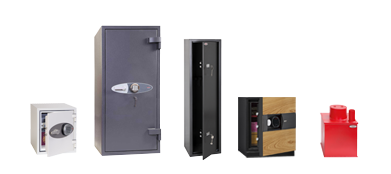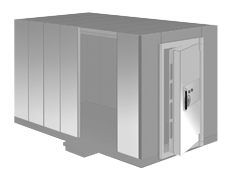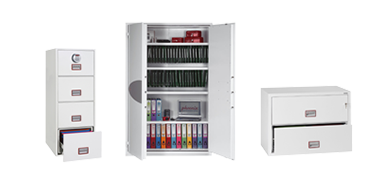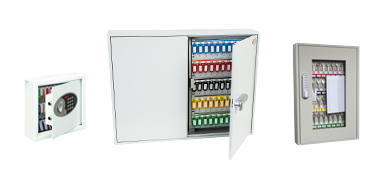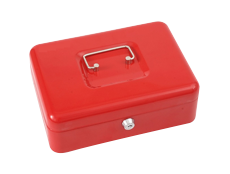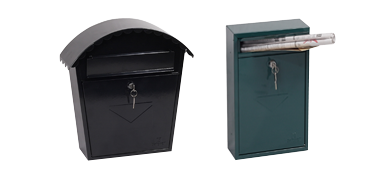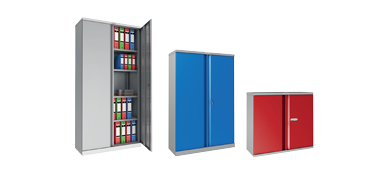Choosing a safe
A safe is the final protection for possessions which need to be stored securely. The right safe for you is one which provides the appropriate level of security, access, features and space.
A basic safe provides security against unwanted access when compared to keeping an item in a drawer or cupboard. To keep your valuables protected against more determined criminals will require stronger safes firmly attached to a solid wall or floor.
Choosing a safe from a reputable manufacturer like Phoenix ensures you are benefitting from hundreds of years of experience in building secure boxes and safes. We use high quality materials and quality construction to ensure our safes are as strong as they look.
The popularity of home safes in recent years has led to a rise in the number of cheap, poorly manufactured safes being sold to unsuspecting consumers. To be sure your safe is secure, it is best to choose a safe from a trusted manufacturer that conforms to recognised industry standards.
When choosing a safe you will need to answer the following questions:
- What do you want to secure?
- Which type of safe will be required?
- What do you want protection from? (Usually burglary and fire).
- What level of security will I need? This is relevant to your insurance cover.
- What type of access will I require? Eg. key lock, key pad, ability to deposit money without opening the safe.
- How much storage space will I require inside the safe?
- Where will I locate my safe and can it be installed there.
In this guide we will go through the options in greater detail to help you decide on the right safe for you.
Home safe or business safe?
Home safes come in a range of sizes, including smaller safes for individual household members. Along with valuables, home fire safes are useful for birth certificates, wills, passports, and other documents that aren’t easy to replace.
Business safes come in a range of sizes and formats to suit the various needs of business. For example, secure and fire resistant filing cabinets are useful for many businesses including solicitors, schools and medical records. Hotels may offer laptop safes or security safes for storing computers and money. Also popular are deposit safes for shopkeepers and fireproof data safes for offices.
It’s also important to consider the type of lock and access that is required. For example, a keypad may be more appropriate than keys if several employees require access.
What do you want to secure?
Draw up a list of exactly which items you would like to store in the safe as this is a key factor in deciding on the appropriate safe. Popular items include:
- Cash – Cash is popular with burglars as other items can be easier to trace and therefore have a reduced value to the thief. The cash rating of a safe is the key factor to ensure you have adequate insurance cover.
- Jewellery – Safes can be fitted with shelving and soft linings to prevent scratching. Have jewellery valued to confirm the level of security required.
- Documents – To prevent documents getting damaged by fire, check the safe has the appropriate fire rating.
- Media – Tapes, discs and drives are also included in the fire ratings for protection in fire safes as detailed below.
- Guns – Specialist gun safes are available to accommodate a set number of firearms.
- Keys – Secure key cabinets come in a range of sizes to accommodate large bunches and individual keys.
- Laptops – Laptop safes are often slimmer in design to fit the shape of the computers.
What do you want protection from?
Burglary protection and fire protection are the two main reasons for buying a safe.
While all safes offer a degree of burglary protection, there are a range of options available. A quick way to determine the level of security is the insurance rating.
Fireproof safes also have ratings according to the level of protection they provide. The type of fire safe will be determined by what you are looking to protect: paper, digital media (eg hard drives, usb sticks, cds) or magnetic media (eg film or tape).
Type of lock
All our locks provide an excellent level of security. The type of lock you choose should depend on what suits your needs. The types of lock available are:
- Key lock – The traditional method with no danger of batteries running out. The risks are in losing the keys and in ensuring the keys themselves are kept in a safe place. We can supply replacement keys for most Phoenix models, though be sure to check if replacement keys would be available for your model. To obtain replacement keys we would require proof of purchase in the form of a copy invoice, delivery note or details of your registered guarantee as well as the key number.
- Electronic keypad – A pin code is entered to open the safe. You can change the pin code as often as you like. A low battery warning lets you know when to replace the batteries. The risks are in forgetting the code.
- Fingerprint – Phoenix safes use biometric security in the form of a fingerprint which is initially scanned in during set-up and confirmed. To open the safe, press the finger against the scanner and open the safe door. The Phoenix fingerprint lock can store up to 128 different fingerprints. Fingerprint locks also require batteries and a low battery warning lets you know when to replace the batteries.
- Dual lock – This is where two key codes are required to open the safe. On a Phoenix safe, the user will type in the first code and press Open, then type in the second code and press Open. This can be useful when you wish to have two people required to open a safe. The two people can have a code each.
- Changeable lock – A changeable lock is one which can replaced if required without damaging the safe. If a lock becomes damaged or compromised, it can be replaced without the cost and inconvenience of replacing the whole safe.
What’s your budget?
A cheap safe will be a small personal safe such as the Home Office SS0721E. This is suitable for keeping personal items out of the way of prying hands. The costs steadily increase with higher levels of security and greater amounts of storage space. By using shelves, stackable containers and key hooks you can maximise the use of space within a safe. Phoenix produce a large range of safes to cater for various requirements at different budgets.
Be sure to check delivery costs as large safes can be difficult to transport.
Some insurers require a safe to be installed by a professional. This can be an additional cost. Many specialist safe retailers offer an installation service and you can get a quote for this when deciding on your safe.
Types of safe
Data safes – Data safes are used to securely store tapes, CDs, DVDs, film stock, hard drives, USB sticks and other forms electronic data. Fire data safes have a fire rating which reflects the lower temperature at which data can be corrupted or the media melted and destroyed. Full details of the fire standards which Phoenix data safes conform to are given below.
Deposit safes – Deposit safes enable you to deposit cash throughout the day without opening the safe. This is popular in shops where the deposit slot is designed to prevent contents being fished out. Deposit safes also reduce the risk of attack to the person making the deposits as they need not have the ability to open the safe.
Floor safes – Floor safes are embedded in a floor, usually surrounded by concrete. They provide excellent security and fire protection. As well as being difficult to access, they are extremely difficult to move. One risk can be water, particularly if they are in a building fitted with a sprinkler system in the event of fire. Items can be placed in waterproof bags or containers to get around this problem.
Gun safes – Anyone with firearms is legally required to store them securely. Every Phoenix gun safe says how many guns it can hold. Ammunition should also be stored securely. All Phoenix gun safes are are tested to BS BS7558/92, the British Standard for gun safes.
Home safes – Home safes are designed to be easier to install than safes for industry. They include locks and storage features suitable for domestic requirements. Home safes often include fire resistance as a home can be susceptible to fire as well as burglary. Demand for home safes has increased greatly in recent years and the good news is that the technology has also improved enabling a greater range of lightweight, secure safes have become increasingly affordable.
Hotel safes – Hotel safes will come with a master override key or code to ensure the hotel owners can gain access if the visitor loses the key or forgets their combination. Hotel safes are commonly used to store laptops and smaller items like cameras, passports, keys and personal valuables.
Key cabinets – Phoenix key cabinets come in a range of sizes to accommodate between 20 and 700 keys. Whereas floor safes are often secured to the floor, key cabinets are designed for wall mounting. Adjustable hook bars enable bunches keys to be stored.
Laptop safes and cases – Laptop safes are constructed in a shape suitable for storing laptops, iPads and other tablet computers. Phoenix also produce a range of cases for travelling with your laptop which include retractable steel cables enabling the case and contents to be secured in a hotel room or other location.
Secure filing cabinets – Secure filing cabinets enable documents to be stored safely without having to transfer them to a separate safe. Phoenix filing cabinets offer fire protection to the recognised international standards, for example the Swedish NT Fire 017 – 120 Paper standard. Phoenix Archivo cabinets also include water resistant seals to keep the contents safe if the cabinet is subjected to water from a sprinkler system or fire hose.
Security safes – Security safes have an emphasis on the strength of the materials, construction and the locking mechanism. The insurance rating is a key guide to the level of security provided by a safe, and we explain how this works below. There are industry standards which Phoenix security safes adhere to and these are also explained below.
Level of security
Safes vary greatly in the level of security they offer. This can be confusing for the customer and the easiest way to work out the level you need can be to look at the security rating for a safe. This is used to check if your insurance will cover the safe contents and uses a series of cash ratings.
For example, a £1,000 cash rating on a safe will cover you for £1,000 in cash or £10,000 in valuables. The full range of cash ratings are:
£1K cash rating = £1,000 cash cover or £10,000 valuables cover
£2K cash rating = £2,000 cash cover or £20,000 valuables cover
£3K cash rating = £3,000 cash cover or £30,000 valuables cover
£4K cash rating = £4,000 cash cover or £40,000 valuables cover
£5K cash rating = £5,000 cash cover or £50,000 valuables cover
The cash rating of a safe is determined by factors such as door and wall thickness, the quality of the lock and the standard of construction.
The safe is tested by being subject to attack with a set range of tools in laboratory conditions. The safe’s ability to withstand these test attacks determines the rating it is given by the standards agency.
High security graded safes are built to the construction standard required by their grade. The higher the grade, the higher the cash rating will be.
European standards
Phoenix use the European EN standards for cash ratings. These can be a requirement of safes for businesses. The EN standards are EN1143-1 and EN14450.
EN1143-1 is the European standard for resistance to a burglary attack with resistance according to a range of grades. These are as follows:
EN-1143-1 Grade 0 equivalent to £6k cash rating
EN-1143-1 Grade 1 equivalent to £10k cash rating
EN-1143-1 Grade 2 equivalent to £17.5k cash rating
EN-1143-1 Grade 3 equivalent to £35k cash rating
EN-1143-1 Grade 4 equivalent to £60k cash rating
EN-1143-1 Grade 5 equivalent to £100k cash rating
EN-1143-1 Grade 6 equivalent to £150k cash rating
EN14450-S1 is the European standard for resistance to a burglary attack Grade S1. This is equivalent to a £2k cash rating.
EN14450-S2 is the European standard for resistance to a burglary attack Grade S2. This is equivalent to a £4k cash rating.
Insurance rating
The insurance rating of a safe determines the amount of cash or valuables that an insurance company will cover when stored overnight in the safe.
Factors which determine the insurance rating include:
- Security of the lock
- Strength of the bolts
- Thickness and strength of the door and walls
- Ability to move the safe
Choose a safe to suit your future requirements, not just your present ones. For example, if you have £2,000 cash to go in a safe now, getting a safe with an insurance rating of £2,000 won’t provide adequate cover if you subsequently wish to store £3,000.
The Association of Insurance Surveyors (AiS) is the leading UK accreditation body for the approval of safes. The AiS Approved logo means a safe has been tested and certified to a standard recognised by all major British insurers.
Fireproof safe
Most safes provide some security against fire, but the level of protection will vary greatly depending on the construction of the safe. A fire safe can be used to store personal items, such as family jewellery or important documents which cannot be replaced by cash alone. Storing such items in a fire safe provides peace of mind with the knowledge that such irreplaceable items are safe from fire as well as burglary.
Fire safes protect paper, digital media and magnetic media. The inside of the safe needs to be below the temperature at which they will combust.
Fire rating for safes
The fire rating of a safe describes the level of fire resistance. There are three parts to the fire rating test:
- Explosion hazard test – simulates a safe being suddenly subjected to extremely high temperatures.
- Fire endurance test – exposes a safe to high temperatures over a period of time.
- Fire drop test – replicates the effect of a safe falling through a burning building.
Fire paper safes are suitable for storing important paper documents such as birth certificates, wills, house deeds, contracts, business documents.
Fire data safes are suitable for storing tapes, CDs, DVDs, USB sticks, hard drives, film negatives. Data requires greater protection than paper as the media can melt or become corrupted at a lower temperature.
The fire test standards below require that the critical maximum temperature of the following media cannot be exceeded:
- Paper: 175˚C
- Digital media: 120˚
- Computer data: 52˚C
Phoenix use a range of standards, including the NT Fire test specifications which originate from the European NordTest standards
NT Fire 017-60 Paper – Requires safe to be heated to 945°c for 1 hour. The maximum temperature inside the cabinet shall not exceed 175°c.
NT Fire 017-90 Paper – Requires safe to be heated to 1050°c for 90 minutes. The maximum temperature inside the cabinet shall not exceed 175°c.
NT Fire 017-120 Dis (for data) – Requires safe to be heated to 1090°c for 2 hours. The maximum temperature inside the cabinet shall not exceed 52°c.
NT Fire 017-120 Paper – Requires safe to be heated to 1090°c for 2 hours. The maximum temperature inside the cabinet shall not exceed 175°c.
The EN 1047 Fire Test is another European standard which Phoenix uses, specifically the EN1047-120 Dis for data. This requires safes to be heated to over 1100˚C for 2 Hours. Internal temperatures shall not exceed 52˚C.
LPS 30P, LPS 60P – EN 15659 – Light Fire Resistance where the internal Temperature will not exceed 175˚C.
GB16810-1997 – Requires the safe to be heated to 945˚C for 1 hour. The Maximum temperature inside the cabinet shall not exceed 175˚C.
MTS DIP 120-60DM (Grade B) – Digital Media fire protection where The internal temperature will not exceed 120˚C.
Size of safe
Due to the thickness of the doors and walls, safes are smaller on the inside than they appear on the outside. This is particularly true of fireproof safes where fire-resistant materials are used in the casing. Always check the internal measurements of a safe are adequate for your needs.
It’s often worth getting a safe with more storage area than you currently require as you may wish to store more items in the future.
Where to locate your safe
Firstly, do you require a floor safe or a wall safe? This will be determined by what you wish to store in the safe and where you wish to locate it. Make sure you have enough room to open the door and access the safe.
Do you need regular access? If so, hiding a wall safe or underfloor safe behind or beneath heavy furniture may not be suitable. Locating a safe against two walls can prevent it being rocked to loosen the fixings. Remember to check the wall is solid, eg. brick. A stud wall is not suitable for fixing a safe to.
Underfloor safes are often located on a ground floor and it is important to check there is sufficient space for the safe, the ground can be excavated and flooring replaced. Also check cables and pipes aren’t running through the intended location. Underfloor safes are best located in areas where there is little footfall above.
Installing a safe
Make sure you can install the safe – large safes will be heavy and difficult to move. Ensure they can get through doorways and up or down any stairs. Heavy safes may need to be moved professionally. Many suppliers offer installation services and it can be worth investigating these when purchasing a large safe.
A poorly installed safe that is easily removed could invalidate the insurance. Check your safe is installed correctly in order to satisfy the insurance rating. Check with our instructions and your insurer. Sometimes an insurer will require the safe to be installed by a qualified professional.
To comply with testing procedures, safes which are EN14450 or EN1143 certified and weigh less than one tonne should be fixed to a solid floor. Rear fixing is used for additional security. Using rear fixing alone, or attaching to a wooden floor may invalidate the insurance and this should be checked.
Securing your safe – can it be attached securely? Particularly for small safes, a safe is only as safe as it’s fixing. The bolts may be strong but is the surface you’re attaching them to? For example, old wood may be broken quite easily and the safe removed with bolts attached.
Solid surfaces such as concrete or brick are preferable for fixing the safe. A safe should be installed flush against a surface. Any carpet should be removed from the floor and skirting board removed if the safe is to be secured against a wall while sitting on the floor.
Security safes will include pre-drilled holes for the bolts to be attached through. Remember that only selected fireproof safes can be bolted to the floor as it can compromise the fire protection.
When installing a safe yourself, you will need a good drill with a masonry drill bit. Follow the supplied instructions for marking where to drill holes and fitting the bolts to anchor your safe to the floor or wall.
An underfloor safe is the most difficult to install as it can involve breaking the floor, digging out a space for the safe, ensuring a waterproof barrier around the safe and fixing the floor so as the safe cannot easily be removed. Underfloor safes are often fitted by professionals.
Extras
Back up keys – Essential if you forget or lose the entry the code for a keypad lock. Back up keys will also be required when batteries fail on locks where the batteries can only be changed from inside the safe.
Alarm – The alarm is set when closing the door. In a Phoenix safe the alarm will sound if the safe is tilted over 45 degrees or impacted.
Key hooks – Alongside dedicated key cabinets, many safes also include key hooks on the inside of the safe door. This provides security and ease of access for a popular item.
Internal light – An internal light can be particularly useful for safes which are stored in dark locations.
Water resistant – Whilst guarding against fire, it can also be important to protect against sprinkler systems and fire hoses which may be used to put out any fire. Guarding against flooding can also be a consideration for ground level and underfloor safes.
Shelves – Adjustable and removable shelving can help organise your safe and maximise the amount of valuables you can store in an organised fashion.
Soft lining – Carpet, felt or another material can be used to line the safe providing protection against scratches for jewellery or other fragile items.
Drawers and inserts – Particularly in larger safes, drawers can be useful for organising the contents. Lockable drawers provide extra security. For example, staff may have access to the safe, while a manager may have access to the lockable drawer. Inserts are often used for storing data items.
If you require any further information to help choose a safe, please contact us here and we will be glad to help.


 USA
USA ES
ES DE
DE FR
FR